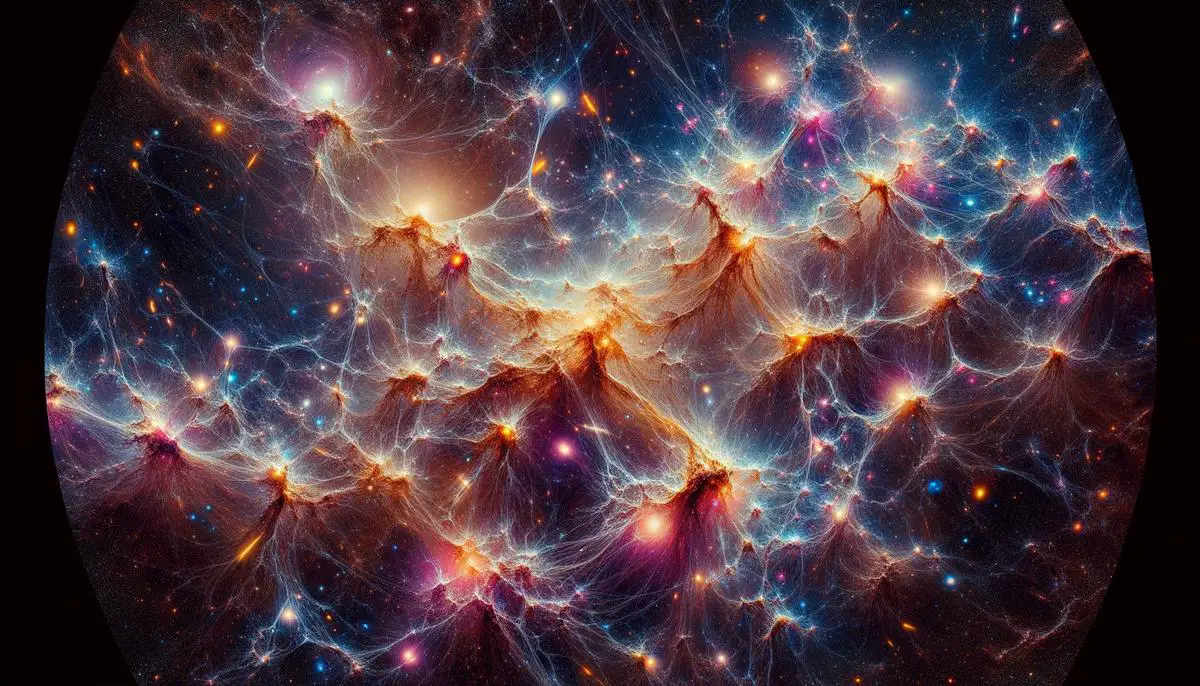Types of Galaxies
Galaxies come in various shapes and sizes, moving through the cosmos with distinct characteristics. Spiral galaxies, like the Milky Way, feature bright, winding arms that host star formation, driven by dense gas clouds compressed by gravitational forces. They often have a central bulge packed with older stars.
Elliptical galaxies are round or oval and filled with older, cooler stars. Their structure is less organized than spirals, and they produce fewer new stars due to depleted gas reserves. These galaxies often result from mergers and can grow quite massive.
Irregular galaxies don't fit neatly into the structured forms of spirals or ellipticals. They may have once been spiral or elliptical before gravitational interactions scrambled their appearance. With ample gas reserves, many of these galaxies are actively forming new stars.
Beyond individual galaxies, there are groups and clusters where galaxies interact closely, affecting their evolution. Some might merge to form ellipticals, while others experience accelerated star formation due to gravitational disturbances.
Even larger structures include superclusters and the cosmic web, where galaxies appear to be part of an immense latticework stretching across the universe. Despite their complex movements, these galaxies obey the laws of gravity, participating in a grand cosmic dance.
Instruments like the Dark Energy Spectroscopic Instrument (DESI) and the upcoming Vera Rubin Observatory provide clearer views of these stellar gatherings, helping us understand how galaxies have changed over time and potentially solving mysteries of dark matter and dark energy.
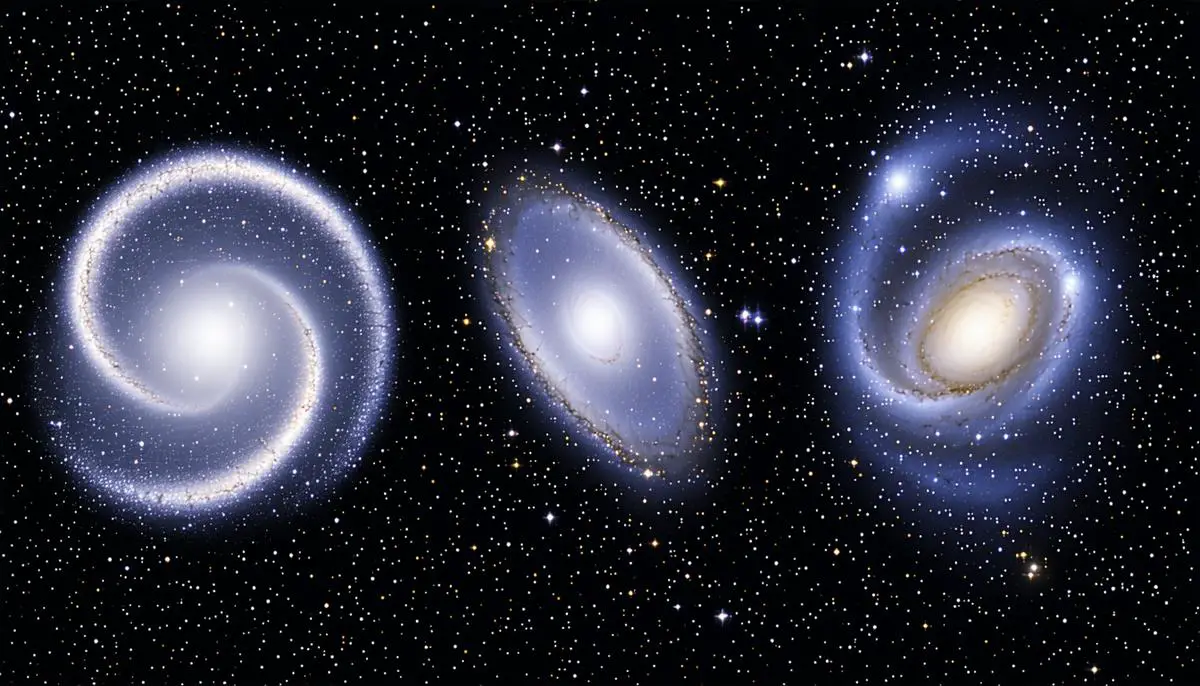
Galactic Formation and Evolution
Galaxy formation began shortly after the Big Bang, driven by gravity, dark matter, and other cosmic forces. In the early universe, gravity drew gas clouds together, causing them to collapse and spin, forming disks that became the perfect stage for star formation. This process gradually built the galactic structures we now observe.
Dark matter plays a crucial role in galaxy formation by creating gravitational wells that normal matter falls into. Without dark matter's gravitational scaffolding, galaxies might never have formed. It acts as the unseen glue holding galaxies together and influencing their motion.
Galaxies are dynamic entities undergoing constant change. They interact, merge, and sometimes collide with neighboring galaxies, altering their appearance and potentially igniting bursts of star formation. These encounters can transform spirals into ellipticals or reshape irregular galaxies.
Other physical processes, such as feedback from supernova explosions and active galactic nuclei, regulate star formation by injecting energy into surrounding gas. This feedback acts like a cosmic thermostat, influencing galactic evolution over time.
Advanced instruments like DESI and the anticipated Vera Rubin Observatory help refine our understanding of these processes by revealing the history encoded in the light of distant galaxies. These observations allow us to map out galactic genealogy through vast expanses of space and time, bringing us closer to comprehending the intricate story of our universe.
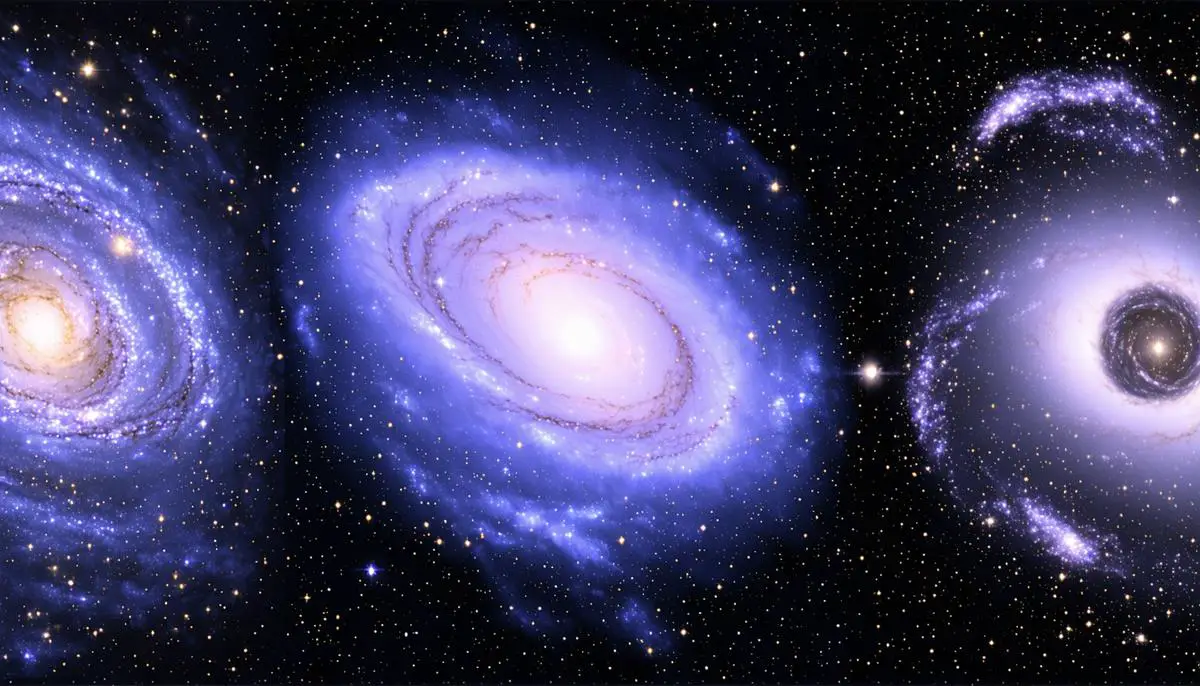
Large-Scale Structure of the Universe
The universe exhibits a hierarchical structure where galaxies group into clusters, clusters gather into superclusters, and these ultimately weave into the vast cosmic web. This network stretches across billions of light-years, forming the universe's grand design.
Galaxy clusters are dynamic environments where hundreds or thousands of galaxies interact through gravitational bonds. These clusters evolve over time as their constituent galaxies collide and merge.
Superclusters are even larger conglomerates of galaxy clusters, forming some of the largest known structures in the universe. They are connected by filaments filled with galaxies, gas, and dark matter, which serve as cosmic highways for the flow of material.
The cosmic web represents the universe's overarching structure, with filaments intersecting at galaxy clusters. This framework guides the evolution of galaxies and forms the backbone of the universe. Within this lattice, galaxies move and behave under the influence of neighboring structures' gravitational pulls.
Key Components of the Cosmic Web:
- Galaxy clusters
- Superclusters
- Filaments
- Voids
Dark matter plays a crucial role in shaping the cosmic web, forming an invisible scaffolding upon which galaxies gather and move. Meanwhile, dark energy accelerates the universe's expansion, stretching the cosmic web's threads.
Advanced observational tools like DESI and the upcoming Vera Rubin Observatory provide detailed glimpses of this cosmic choreography, helping us understand how galaxies have been drawn together and pulled apart over eons. These observations contribute to our evolving comprehension of the universe's structure and evolution.
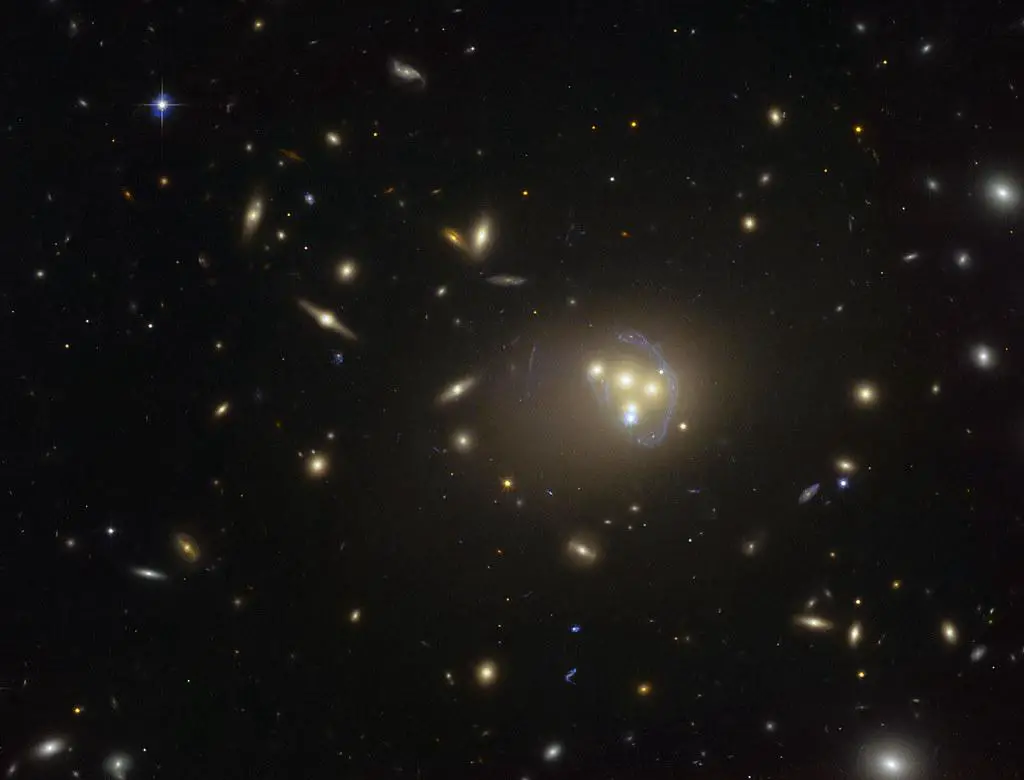
Dark Matter and Galactic Dynamics
Dark matter, though invisible and undetected by our instruments, plays a crucial role in shaping the universe. Its gravitational influence is essential to our standard cosmological model, affecting galaxy formation, rotation curves, and the 'missing mass' problem.
In the early universe, dark matter acted as a cosmic scaffold, allowing baryonic matter to coalesce and form the complex structures we observe today. Without dark matter, the formation of galaxies, spirals, and superclusters might not have been possible.
Galaxy rotation curves provide compelling evidence for dark matter's presence. These curves, which plot the speeds of stars and gas orbiting galactic centers, remain unexpectedly flat instead of decreasing with distance. This suggests the presence of a hidden mass halo enveloping galaxies.
"The 'missing mass' problem further underscores dark matter's importance. Current models suggest that dark matter comprises approximately 85% of all matter in the universe."
Its gravitational effects are essential for holding together massive galaxy clusters, where the velocities of individual galaxies exceed what visible matter alone would indicate.
Despite its significance, the true nature of dark matter remains unknown. Researchers continue to investigate whether it consists of exotic particles or something entirely different, making it one of the most intriguing puzzles in modern astrophysics.
Instruments like DESI allow us to study dark matter's role in the cosmic structure by mapping billions of galaxies. These observations help refine our understanding of cosmic expansion and the interplay between dark matter's gravitational influence and dark energy's expansive force.
As our knowledge deepens, we edge closer to unveiling the full complexity of our cosmic neighborhood and appreciating the delicate balance of forces shaping our universe.

Galactic Mass and Light Ratios
To understand the composition of galaxies and their contributions to the universe's matter density, astronomers use mass-to-light ratios. This approach examines the balance between a galaxy's matter content and its light emission.
Measuring galaxy masses involves investigating observed dynamics and theoretical models. For spiral galaxies, studying rotation curves is key. These curves trace how stars and gas orbit the galactic center, allowing astronomers to infer the enclosed mass using gravitational laws. Spiral galaxies show increasing mass beyond their luminous core, suggesting the presence of dark matter.
Elliptical galaxies require a different approach due to their lack of orderly spin. Here, velocity dispersions—measuring the spread in star speeds—offer insights into the galaxy's total mass through the laws of dynamics.
Binary galaxies present unique challenges, such as:
- Orbital eccentricity uncertainties
- Projection angles
These factors can complicate mass determination.
For galaxy clusters and superclusters, the Virial Theorem helps estimate total mass by evaluating the gravitational energy needed to hold the system together. Mass-to-light ratios in these structures are key indicators of unseen mass, highlighting the disparity between observed light and gravitational mass.
Mass-to-light ratios illuminate not just individual galaxy composition but also the broader matter density of the universe. In spirals, increasing ratios moving outward suggest dark matter halos. Ellipticals exhibit higher ratios, indicating mature star assemblies with minimal ongoing formation.
On a larger scale, the mass-to-light ratio of galaxy clusters strengthens the case for dark matter's pervasive presence. The contrast between visible light and gravitational mass implies a universe dominated by invisible components.
These ratios serve as vital tools for revealing cosmic composition, bridging stellar light with hidden mass and guiding us toward a more nuanced understanding of the universe's matter distribution.
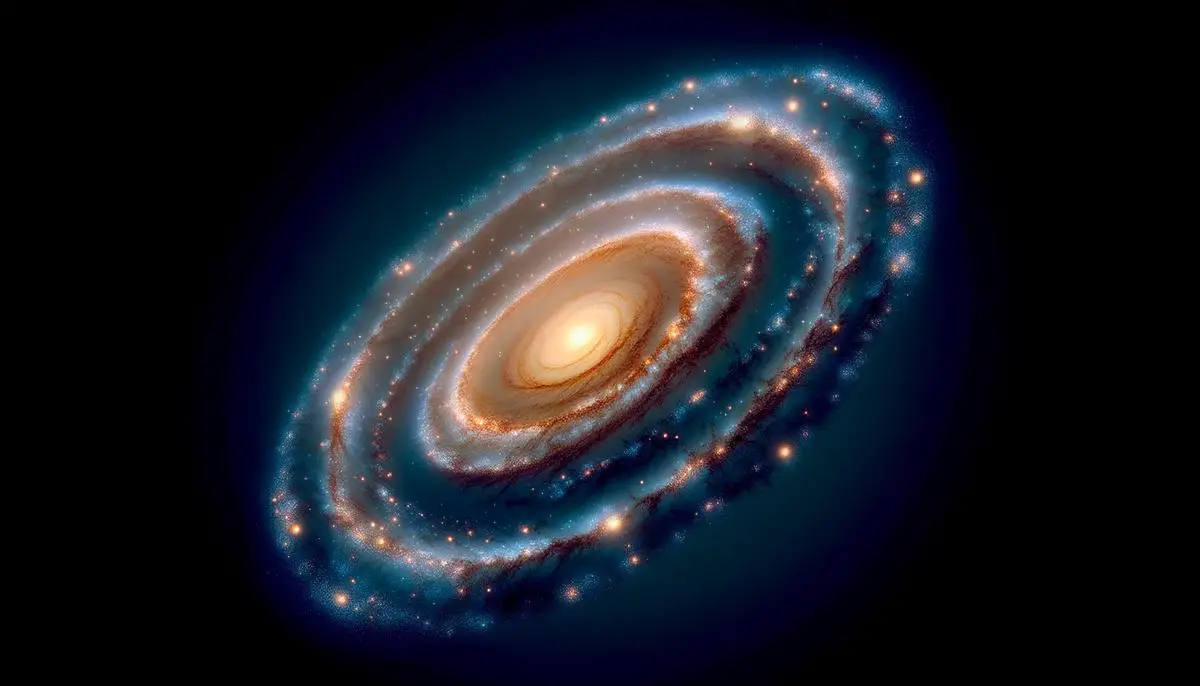
As we examine the cosmos, the complex interactions of galaxies reveal the influence of unseen forces. Dark matter, through its gravitational effects, shapes the universe's structure and guides galactic movements. This invisible mass is a crucial component in holding the universe together, offering insights into cosmic mysteries beyond our direct observation.
![]()
